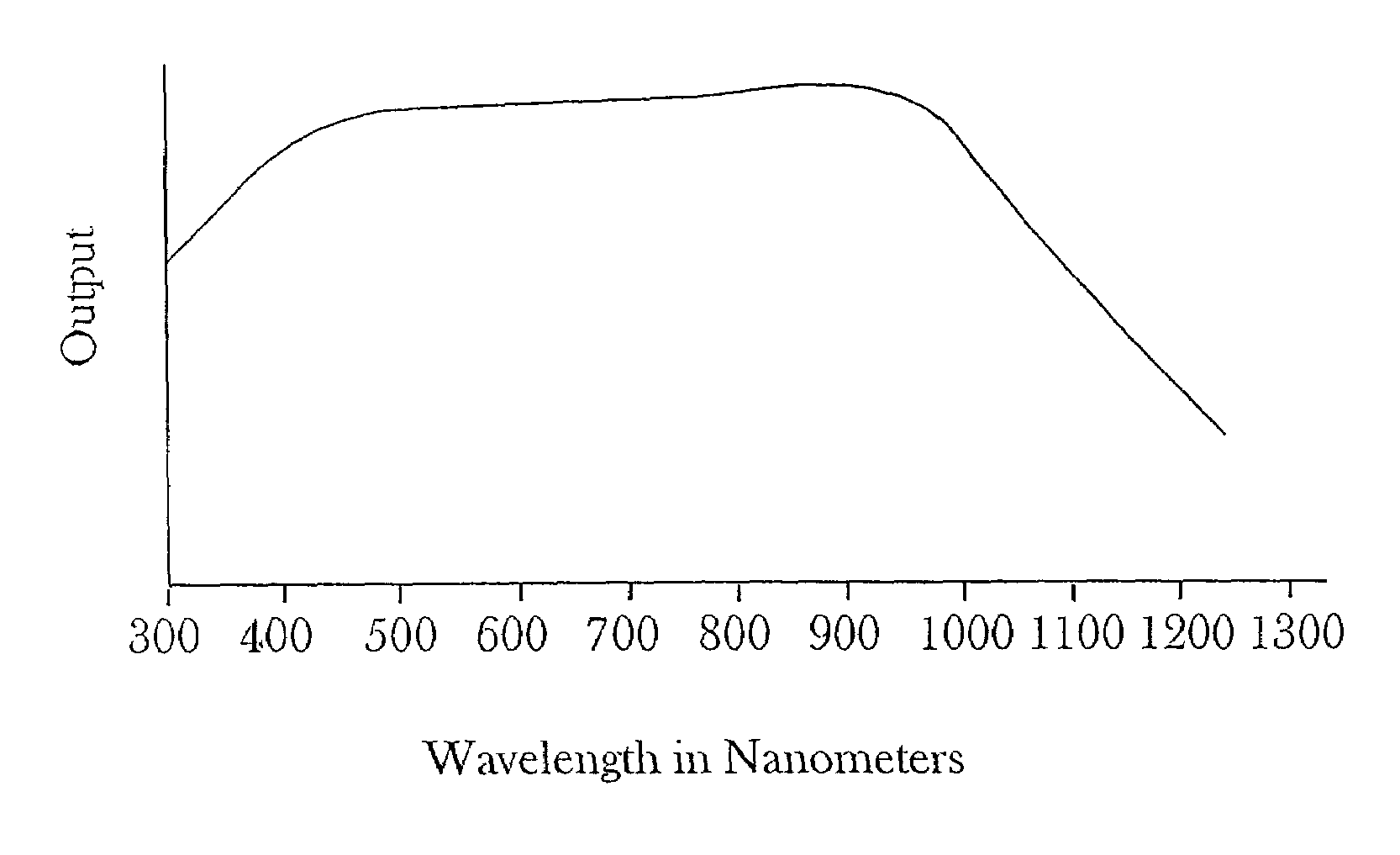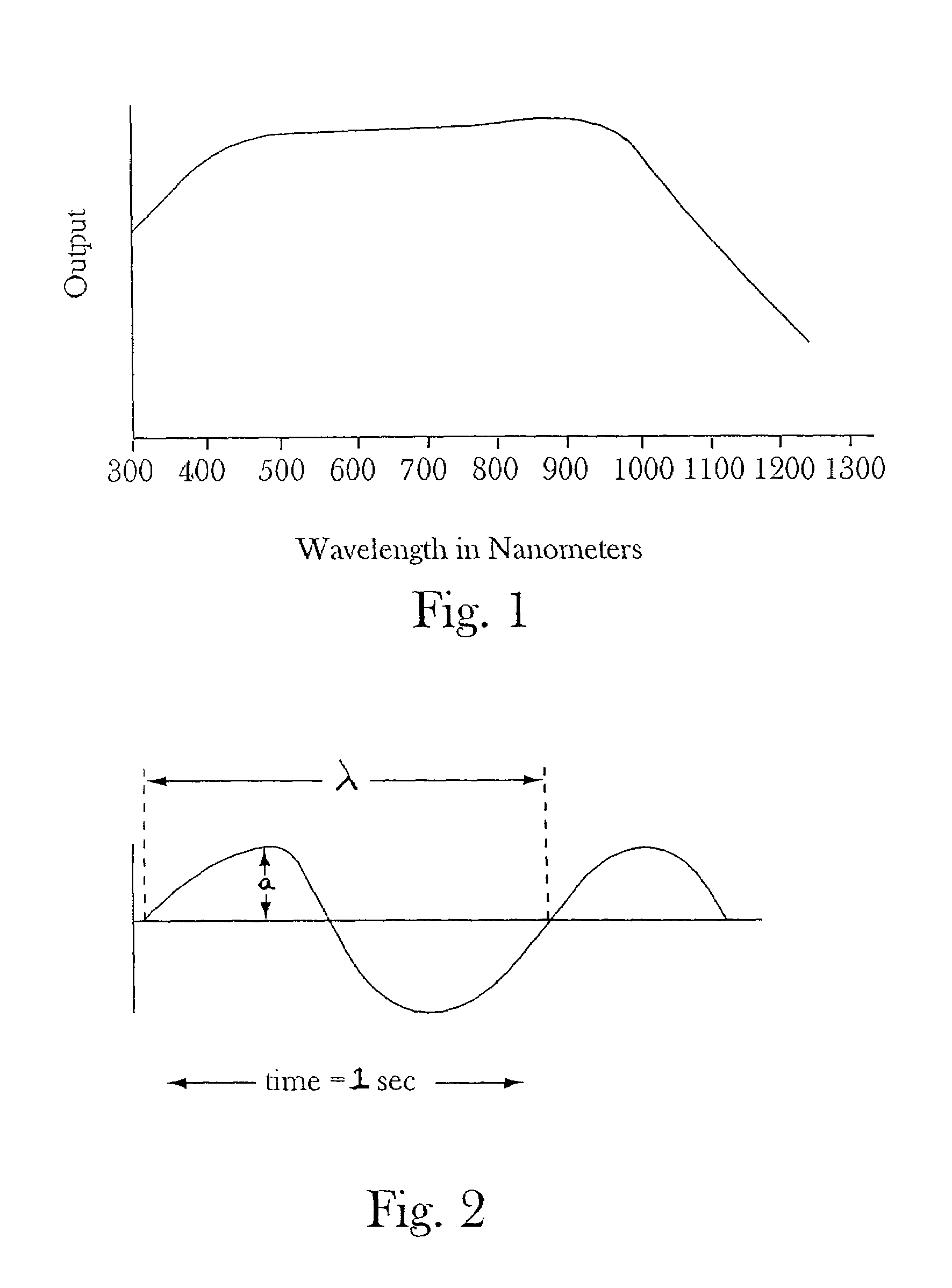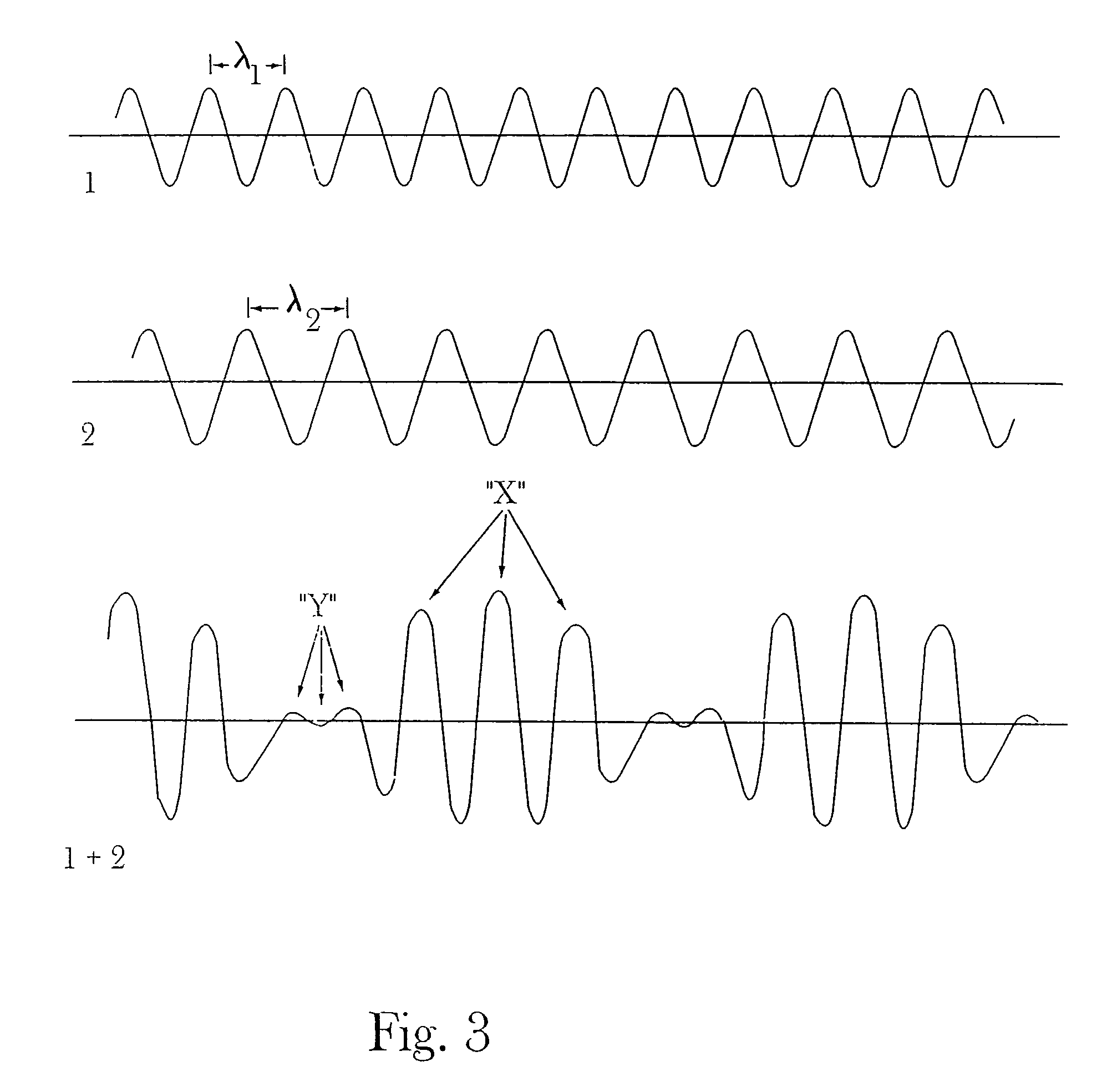High efficiency solar cells
- Summary
- Abstract
- Description
- Claims
- Application Information
AI Technical Summary
Benefits of technology
Problems solved by technology
Method used
Image
Examples
Embodiment Construction
[0037]FIG. 1 shows a typical output response for a crystalline silicon solar cell. In this regard, the x-axis corresponds to wavelengths from about 300 nanometers to about 1400 nanometers, which is the typically desired response range that traditional solar cell manufacturers have sought for the photovoltaic material(s) comprising the solar cell. The y-axis corresponds to a particular output present at various measured wavelengths along the x-axis. The prior art is replete with attempts to describe means for utilizing more and more of the wavelengths contained in sunlight (e.g., light trapping techniques, etc.), however, the prior art misses the point that undesirable effects can also occur at the same time that certain desirable effects are occurring resulting in a canceling or blocking out of some of the desirable effects.
[0038]In this regard, for example, FIG. 2 shows a first sine wave which corresponds to a particular wavelength “λ”, a certain amplitude “a” and a frequency of 1 ...
PUM
 Login to View More
Login to View More Abstract
Description
Claims
Application Information
 Login to View More
Login to View More - R&D
- Intellectual Property
- Life Sciences
- Materials
- Tech Scout
- Unparalleled Data Quality
- Higher Quality Content
- 60% Fewer Hallucinations
Browse by: Latest US Patents, China's latest patents, Technical Efficacy Thesaurus, Application Domain, Technology Topic, Popular Technical Reports.
© 2025 PatSnap. All rights reserved.Legal|Privacy policy|Modern Slavery Act Transparency Statement|Sitemap|About US| Contact US: help@patsnap.com



